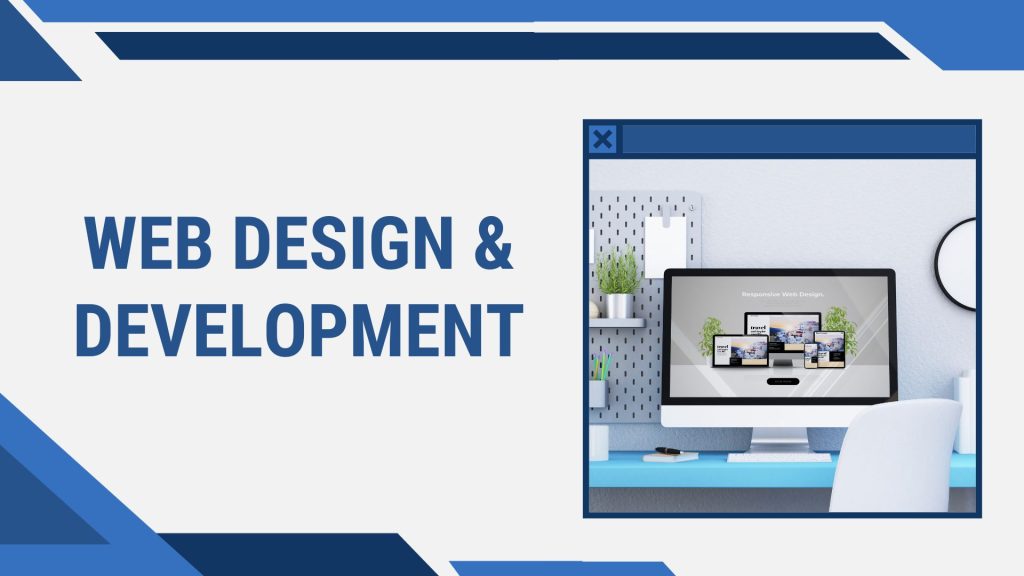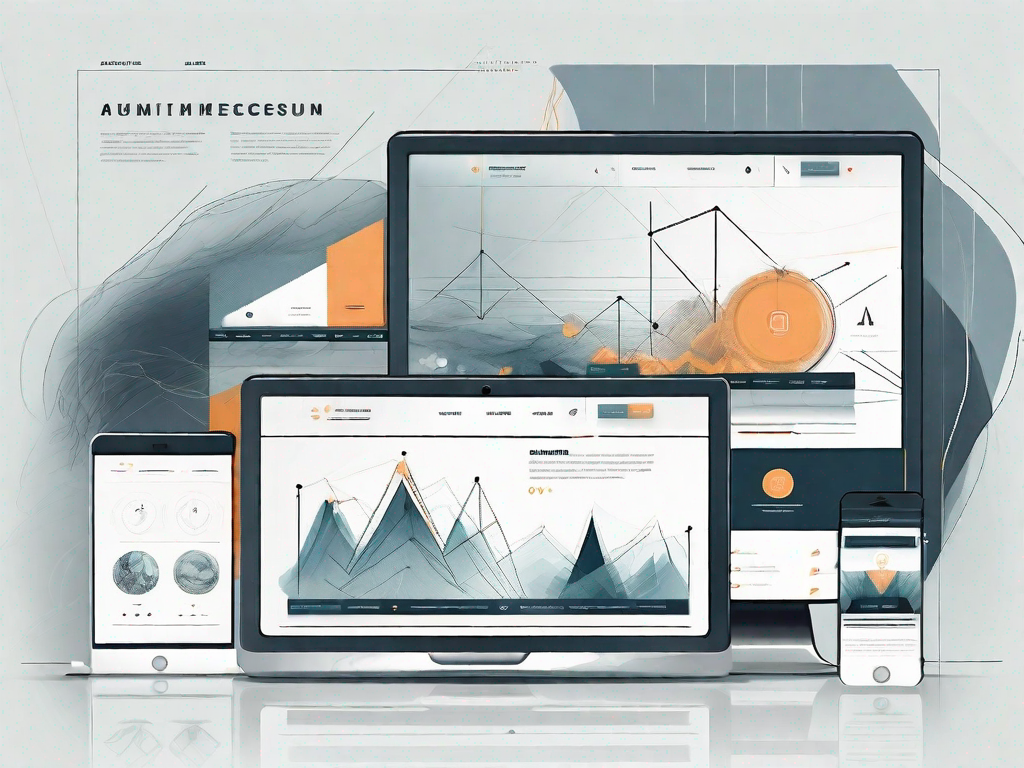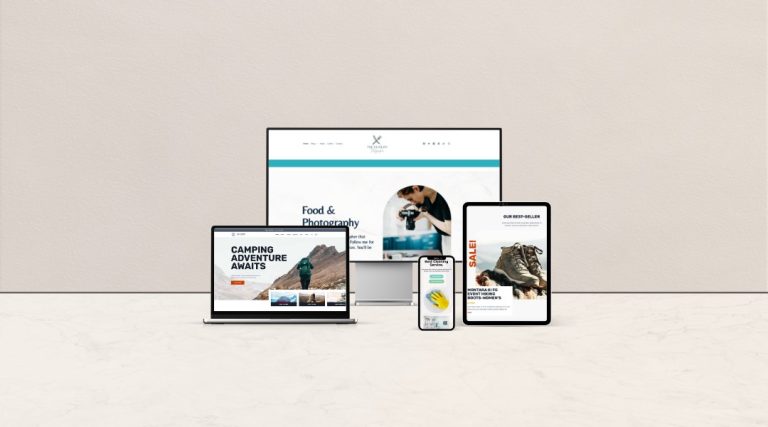Effective Company Website Design
Having an effective company website design is crucial for businesses of all sizes. A well-designed website not only serves as a powerful marketing tool but also enhances brand perception and improves user experience. In this article, we will explore the importance of website design for businesses and discuss key elements to consider when creating and maintaining an effective company website.
Understanding the Importance of Website Design for Businesses
The role of company website design in branding cannot be underestimated. It is often the first impression potential customers have of your business. A professionally designed website can communicate your brand’s values, mission, and personality. It allows you to stand out from the competition and create a lasting impression on visitors.
In addition to branding, company website design also plays a critical role in user experience. A well-designed website should be visually appealing, easy to navigate, and provide relevant and engaging content. By enhancing user experience, you can keep visitors on your site longer, reduce bounce rates, and increase the likelihood of conversions.
When it comes to company website design, attention to detail is key. Colors, fonts, and imagery should align with your brand identity and evoke the desired emotional response from your target audience. A cohesive design that reflects your brand’s personality can help build trust and credibility with potential customers.
Furthermore, company website design directly impacts conversion rates. A poorly designed website with confusing layouts and slow load times can lead to high abandonment rates and lost sales opportunities. On the other hand, a well-optimized website with clear call-to-actions and intuitive design can significantly improve conversion rates.
When designing your website, it is important to consider the user’s journey. A well-thought-out navigation structure and intuitive user interface can guide visitors through your site, making it easy for them to find the information they need and take the desired actions. By understanding your target audience’s needs and preferences, you can tailor your website design to provide a seamless user experience.
Mobile responsiveness is another crucial aspect of company website design. With the increasing use of smartphones and tablets, it is essential that your website is optimized for mobile devices. A responsive design ensures that your website adapts to different screen sizes, providing a consistent and user-friendly experience across all devices.
Moreover, website design can also impact your search engine rankings. Search engines like Google consider user experience as a ranking factor. A well-designed website that loads quickly, has relevant and high-quality content, and is easy to navigate can improve your chances of ranking higher in search engine results pages.
Lastly, website design is an ongoing process. It is important to regularly update and optimize your website to keep up with the latest design trends, technological advancements, and user expectations. By staying up-to-date, you can ensure that your website continues to deliver a positive user experience and remains effective in achieving your business goals.

Key Elements of an Effective Company Website Design
When creating a company website, several key elements must be considered to ensure its effectiveness.
Building a website for your company is not just about having an online presence; it is about creating a digital representation of your brand, values, and offerings. A well-designed website can be a powerful tool in attracting and engaging your target audience. Let’s explore some key elements that contribute to an effective company website design.
The Role of Website Design in Branding
Your website design should reflect your brand’s identity and values. This goes beyond simply placing your logo on every page. Consistency is key. Use colors, typography, and visual elements that align with your brand guidelines throughout your site. By doing so, you create a cohesive and memorable experience for your visitors. A well-designed website not only enhances your brand’s image but also establishes credibility in the eyes of your audience.
Imagine visiting a website that uses a mishmash of colors and fonts, with no clear visual hierarchy. It would be confusing and unprofessional, leaving you with a negative impression of the company. On the other hand, a website that carefully incorporates your brand’s visual elements creates a sense of professionalism and trust.
How Website Design Affects User Experience
User experience should be at the forefront of your website design strategy. Aesthetics alone are not enough; your website should be easy to navigate and provide a seamless browsing experience. Consider the layout, navigation, and overall flow of your website.
Imagine you are a visitor trying to find specific information on a poorly designed website. The navigation is confusing, the content is disorganized, and it takes forever to load. Frustrating, right? Visitors are likely to abandon such a website and look for alternatives. On the other hand, a user-friendly design that enables visitors to find what they need quickly and intuitively will keep them engaged and encourage them to explore more pages on your site.
Investing in user experience design can have a significant impact on your website’s success. Conduct user research, analyze user behavior, and optimize your website based on the insights gained. By doing so, you can create a website that not only looks great but also provides a seamless and enjoyable experience for your visitors.
The Impact of Website Design on Conversion Rates
Your website’s design can have a significant impact on your conversion rates. Conversion refers to the desired actions you want your visitors to take, such as making a purchase, filling out a contact form, or subscribing to a newsletter.
When designing your website, incorporate clear call-to-actions (CTAs) strategically. Place them where they are easily noticeable and make sure they stand out from the rest of the content. A well-designed CTA can guide visitors towards the desired actions and increase the chances of conversion.
If you have an e-commerce website, the design of your product pages and checkout process plays a crucial role in conversion rates. Ensure a seamless and intuitive checkout process, minimize friction points, and provide clear product information and pricing. A well-designed website that guides visitors toward desired actions can greatly increase your conversion rates.
Remember, an effective company website design goes beyond aesthetics. It should align with your brand, provide a seamless user experience, and drive conversions. By investing in these key elements, you can create a website that not only looks great but also helps your business thrive in the digital landscape.
Steps to Create an Effective Company Website Design
Now that we’ve discussed the importance of website design, let’s delve into the steps to create an effective company website.
Creating a website that effectively represents your company and engages your target audience requires careful planning and attention to detail. By following these steps, you can ensure that your website not only looks visually appealing but also serves its purpose effectively.
Defining Your Website’s Purpose
Before diving into the designing process, clearly define your website’s purpose and goals. Is it to generate leads, sell products, provide information, or all of the above? Understanding your website’s purpose will guide the design elements and content strategy.
For example, if your website’s purpose is to generate leads, you may want to focus on creating compelling call-to-action buttons and forms that encourage visitors to take action. On the other hand, if your goal is to sell products, you may want to prioritize showcasing your products with high-quality images and detailed descriptions.
Planning Your Website Layout
When planning your website layout, consider the overall structure and hierarchy of your pages. Use intuitive navigation menus and ensure that the most important information is easily accessible. A well-organized layout will enhance user experience and improve the overall flow of your website.
Think about how you want your visitors to navigate through your website and what information they should be able to find with ease. Consider creating a logical hierarchy of pages, with the most important pages being easily accessible from the main navigation menu. This will help users find what they are looking for quickly and easily.
Choosing the Right Design Elements
Selecting the right design elements is crucial for an effective company website design. This includes choosing the appropriate colors, typography, and imagery that align with your brand identity. Keep in mind that a cluttered design can be overwhelming, so opt for a clean and modern aesthetic.
Colors play a significant role in creating a visual impact on your website. Choose colors that not only reflect your brand but also evoke the desired emotions in your visitors. For example, if you want to create a sense of trust and professionalism, you may opt for a color palette that includes shades of blue.
Typography is another important aspect of company website design. Choose fonts that are easy to read and align with your brand’s personality. Consider using a combination of fonts to create visual interest while maintaining readability.
When it comes to imagery, select high-quality photos and graphics that enhance your website’s overall aesthetic. Use images that are relevant to your content and help convey your message effectively.
Testing and Launching Your Website
Before launching your website, it is essential to thoroughly test its functionality and responsiveness across different devices and browsers. Check for broken links, optimize load times, and ensure that all forms and interactive elements are working correctly. Launching a well-tested website will provide a seamless experience for your visitors.
Consider testing your website on various devices, such as desktops, laptops, tablets, and smartphones, to ensure that it looks and functions properly across different screen sizes. Pay attention to how your website loads and make necessary optimizations to improve its performance.
Additionally, test all the interactive elements on your website, such as contact forms, search bars, and social media integration, to ensure they are working as intended. This will help you provide a smooth user experience and avoid any frustration for your visitors.
By following these steps and paying attention to the details, you can create an effective company website design that not only attracts visitors but also engages and converts them into loyal customers.
Maintaining and Updating Your Company Website
Creating an effective company website is not a one-time task. Regular maintenance and updates are necessary to keep your website relevant and to ensure optimal performance.
The Need for Regular Website Updates
Regularly updating your website with fresh content, blog posts, and product/service information helps to keep your audience engaged and informed. It also signals search engines that your website is actively maintained, which can improve your search engine ranking.
Monitoring Website Performance
Monitoring your website’s performance using analytics tools is crucial to identify areas for improvement. Analyze website traffic, user behavior, and conversion rates to make data-driven decisions when making updates to your website design and content.
Implementing User Feedback in Website Updates
Listen to your users’ feedback and implement necessary changes. Whether it’s improving navigation, addressing user experience issues, or adding new features, incorporating user feedback can help you optimize your website design and enhance overall user satisfaction.
In conclusion, creating an effective company website design is a multifaceted process that involves understanding the importance of website design for businesses, incorporating key design elements, and ensuring regular maintenance and updates. By prioritizing website design, businesses can create a visually compelling and user-friendly website that drives brand awareness, enhances user experience, and boosts conversion rates.


